THE ART OF ACTING: FILM ACTRESSES & GLOBAL CLASSICS
My reflections on actresses and their most compelling performances in (mostly) classics of global cinema

Catherine Deneuve – Tristana, Repulsion, Belle de Jour
CATHERINE DENEUVE ACTRESS, PART 4 OF 4: TRISTANA (LUIS BUÑUEL)
Richard Jonathan
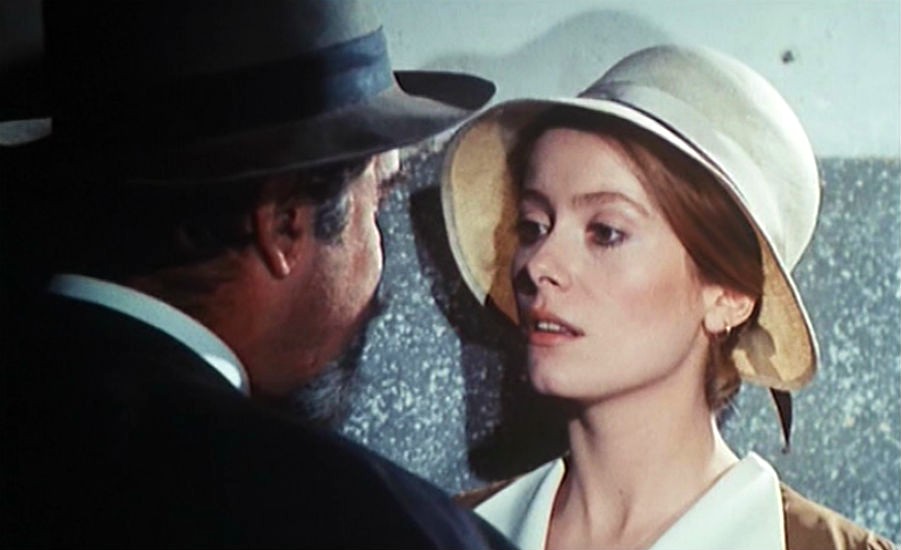
Fernando Rey & Catherine Deneuve, Tristana, Luis Buñuel
When Carlos Fuentes, in his article-interview published in The New York Times in 1973, asked Luis Buñuel, ’What is your attitude to sex?’, Buñuel answered: ‘Personally, I’m monogamous and discreet. An old man can easily make a fool of himself. Like Don Lope in Tristana, I believe in a chaste eroticism. You can attribute that to my Jesuit education. Sexual pleasure for me is directly linked with the idea of sin and only exists in a religious context. The sexual act cannot be reduced to a chapter on hygienics; it is an exciting, dark, sinful, diabolical experience. Sex is a black tarantula and sex without religion is like an egg without salt. In the Summa Theologica, Saint Thomas says that fornication between man and woman, even if they be married, is nevertheless a venial sin. Now, I think that’s a very sexy idea! Sin multiplies the possibilities of desire.’

Carlos Fuentes: ‘Sex is very powerful in Buñuel’s films because it is felt rather than seen’. | Tristana baring her breasts to Saturno | Catherine Deneuve, Tristana, Luis Buñuel
In Tristana, Buñuel’s black tarantula has lost its solar sheen, its capacity to transport to a place of transcendence, and instead breeds the monsters of violation, incest and vengeance. Indeed, the film is a drama of sexual revenge, and its foundational event is, upon the death of her mother (fast upon that of her father), Tristana, not yet twenty, falling under the tutelage of Don Lope, a man in his mid-fifties. Catherine Deneuve’s challenge, in playing the role, was to be equally convincing across the wide spectrum of changes the character and her context undergo.
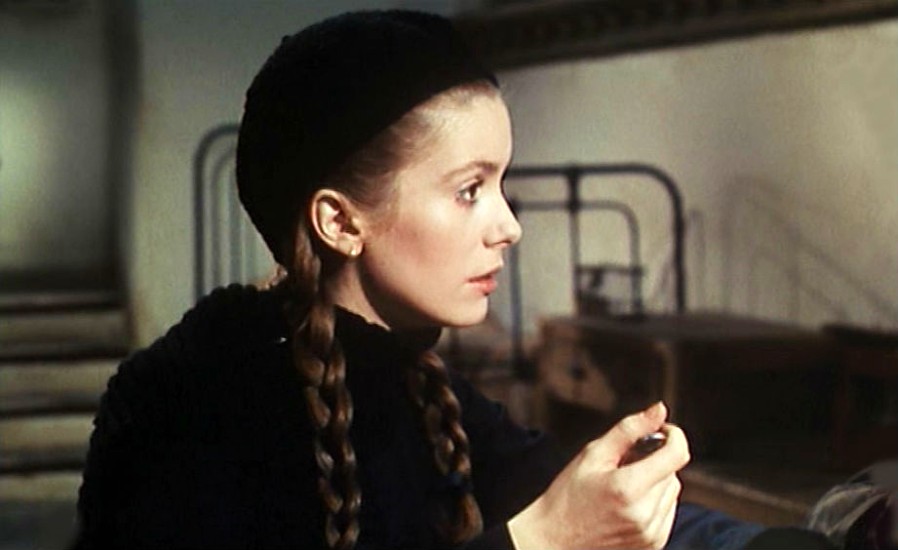
Catherine Deneuve, Tristana, Luis Buñuel
We can schematize these changes as a series of three-part movements, as follows:
1. Tristana’s innocence > her incestuous seduction by Don Lope > her revenge for this violation
2. Tristana as quiet individualist > as outspoken idealist > as embittered cynic
3. Tristana’s psychological state: contentment > entrapment > rebellion
4. Don Lope’s attitude to Tristana: domestic tyranny > calculated tolerance > suffering resignation
5. Don Lope’s material circumstances: genteel poverty > deeper genteel poverty > wealth
In the reflections that follow, keep in mind these two lines that synthesize the five: Tristana’s evolution from ingénue to rebel to bitch; Don Lope’s from despot to ‘manager’ to martyr. For my part, I will focus on the understated impetus of all that unfolds: the ‘incest’ at the heart of the film.
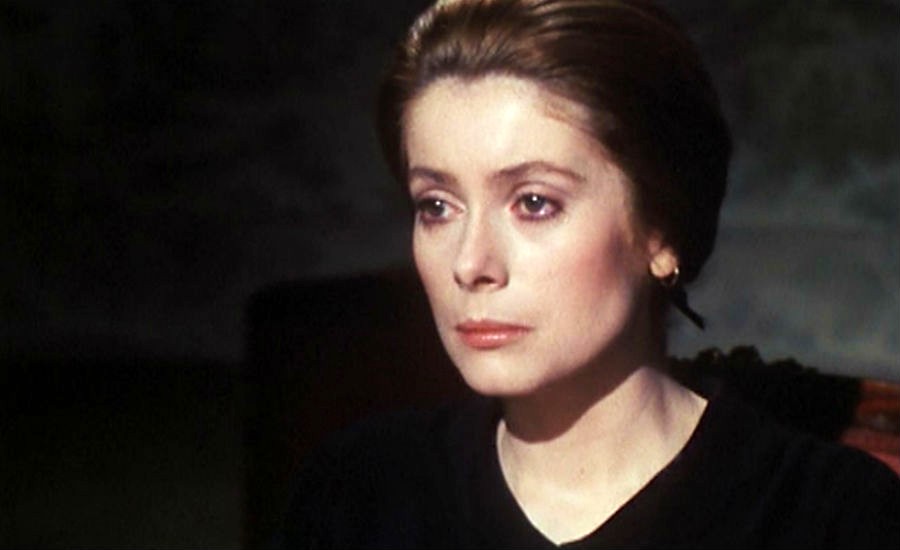
Catherine Deneuve, Tristana, Luis Buñuel
One’s ‘choice of symptom’, as I’ve implied in my discussion of Repulsion and Belle de Jour, is never innocent. So why does Tristana develop a tumour in a leg that leads to the leg being amputated (just below the knee)? Galdós in his novel gives no clue; Buñuel, for his part, has Don Lope cite (well before the amputation) the Spanish folk saying, ‘To keep a woman honest, break her leg and keep her at home’—a saying that becomes, of course, richly resonant in the drama.
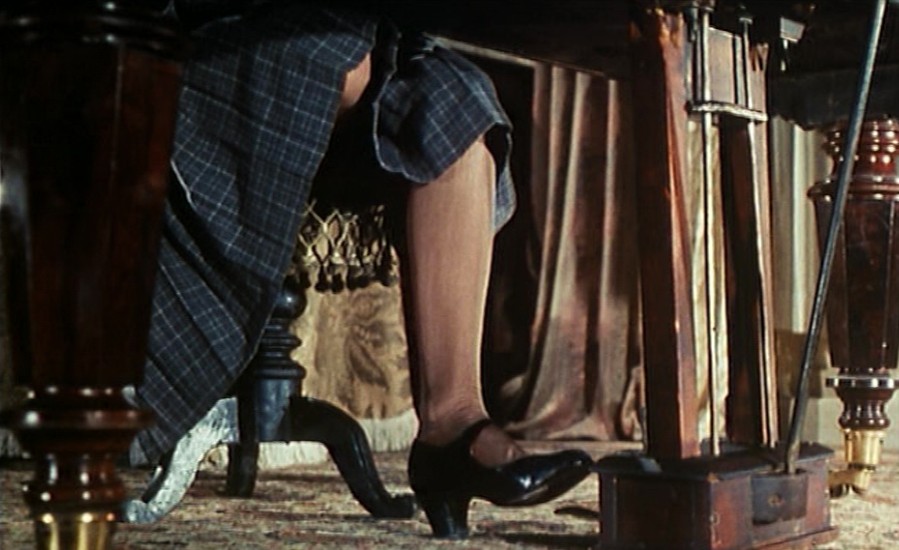
Catherine Deneuve, Tristana, Luis Buñuel
For my part, I believe Don Lope’s sexual relations with Tristana are a clear case of incest. ‘I can be your father or your husband, whichever suits my purpose’, he tells her, justifying his behaviour. Compounding this quasi-‘first-degree’ incest (incest need not be blood-incest to be experienced as incest) is a ‘second-degree’ one: Tristana’s mother was Don Lope’s mistress, meaning Don Lope, in effect, ‘fuses’ mother and daughter, incestuously effacing the generational boundaries that divide them. Don Lope’s sexual relations with Tristana, then, generate a slow-burning trauma that assumes bodily expression as the tumour in her leg. That is my thesis*.
* If you’re interested in theoretical support for this thesis, see (if you read French) the book L’inceste et l’incestuel and the article ‘Étendre la notion d’inceste: exclusion du tiers et binarisation du ternaire’.
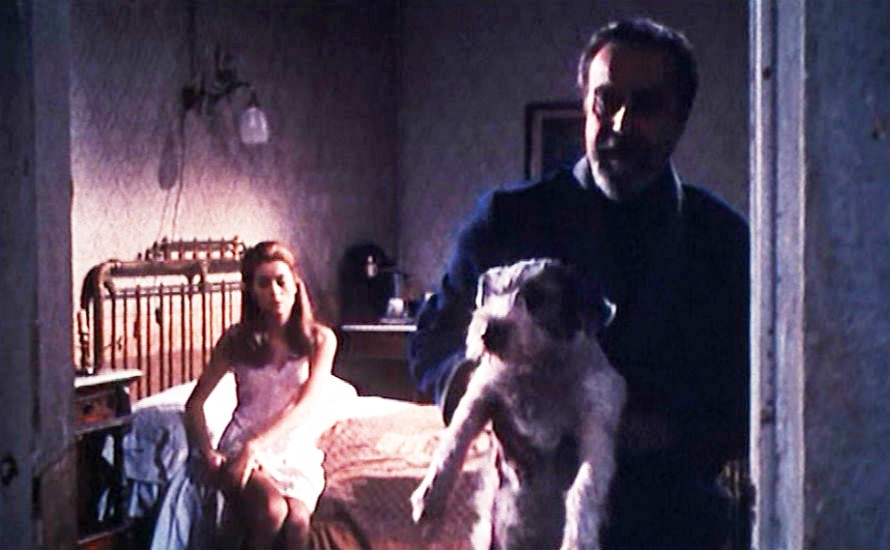
Catherine Deneuve & Fernando Rey, Tristana, Luis Buñuel
Seduced into sleeping with Don Lope, Tristana feels increasing disgust for him, especially as her relationship with her new lover, Horatio, develops. So she runs away with Horatio, in pursuit of a love unconstrained by any institution, be it sanctified tutelage (husband-wife) or merely official (guardian-ward). After the rapture of their early love, however, she is sorely disappointed to find Horatio intent on following convention (husband, house, baby).
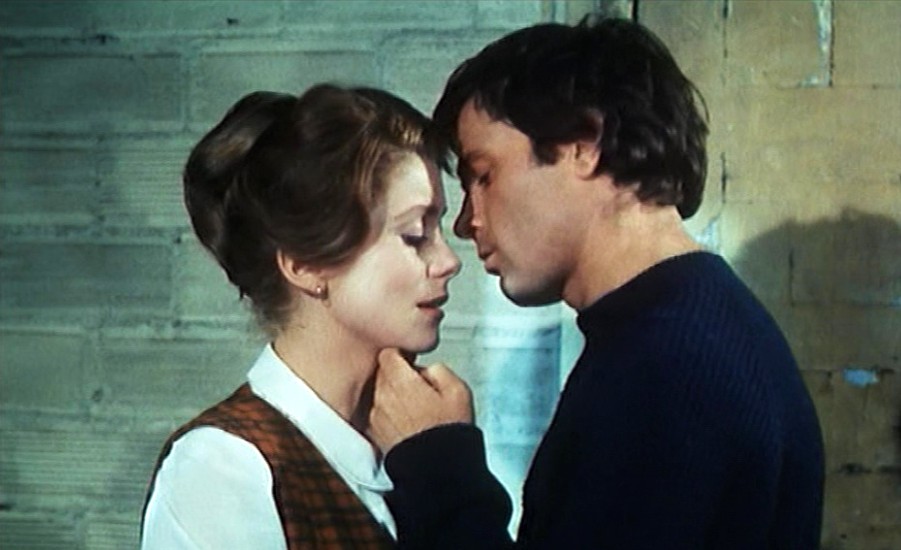
Catherine Deneuve & Franco Nero, Tristana, Luis Buñuel
So she runs back to Don Lope, and with the amputation of her leg ensures, firstly, that she will no longer run away from revenging her violation, and secondly, that Don Lope, trapped by his lust and love and sense of duty, will not run away from her. ‘There’ll be no more running’, she seems to have decided: revenge is cruelest in a huit clos. If Tristana now has something of Lady Macbeth, her rallying cry, as we’ll see, is not ‘unsex me here’ but ‘sex me here’.
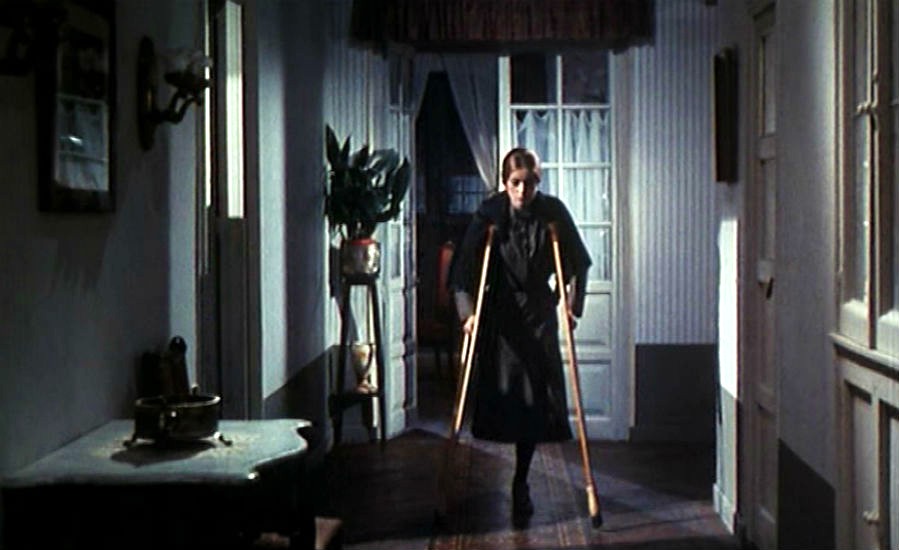
Catherine Deneuve, Tristana, Luis Buñuel
‘Heaven has no rage like love to hatred turned, nor hell a fury like a woman scorned’ (Congreve, The Mourning Bride): In Tristana, for ‘fury’ read ‘revenge’ and for ‘scorned’ read ‘violated’. In the first two thirds of the film Tristana’s emotions are richly varied: In the bell tower with Saturno she is a winning blend of curiosity and confidence, radiating a red-blooded wholesomeness into which Don Lope’s severed head comes to cast a poison; confessing her ‘dishonour’ to Horatio, she is torn between past shame and future pride; with Saturna, she is conspiratorial and complicit, forthright and assertive.
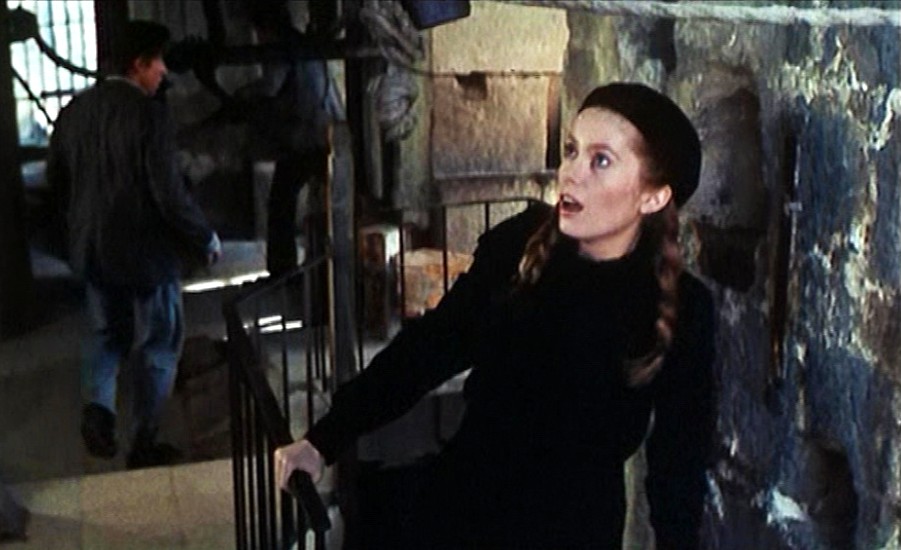
Catherine Deneuve, Tristana, Luis Buñuel
But in the last third of the film, as she exacts her revenge, her contempt is all-consuming: one-legged with Don Lope, she gives full reign to her disdain. On their wedding night, for example, she refuses him her favours, but does so with a cutting put-down: ‘At your age!’.
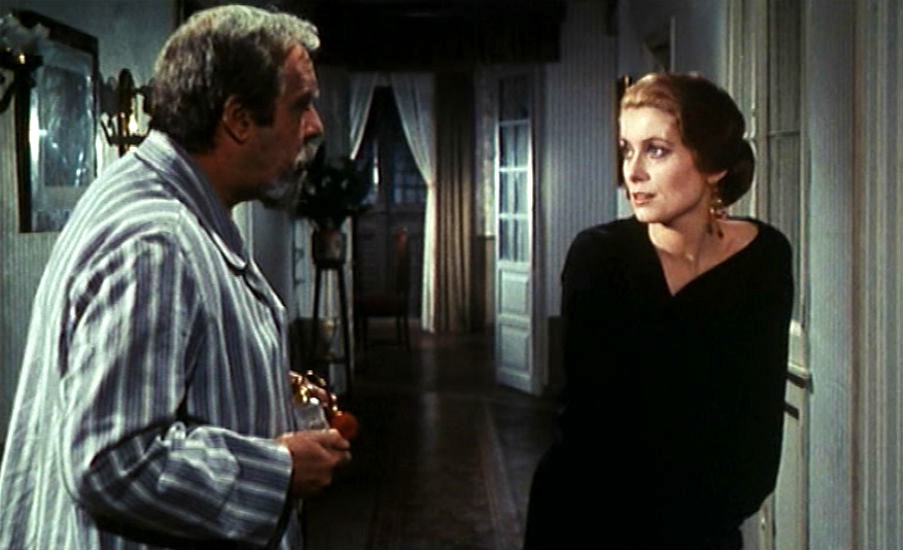
Catherine Deneuve & Fernando Rey, Tristana, Luis Buñuel
Something else, however, differentiates the last third of the film from the first two: Tristana, despite her amputation, is confident in her sexuality. Don Lope’s desire for her, if more tender, is nevertheless as fervent after the operation as before, and in Saturno’s masturbation fantasies—for that is all Tristana allows him—she is as fully present as previously.
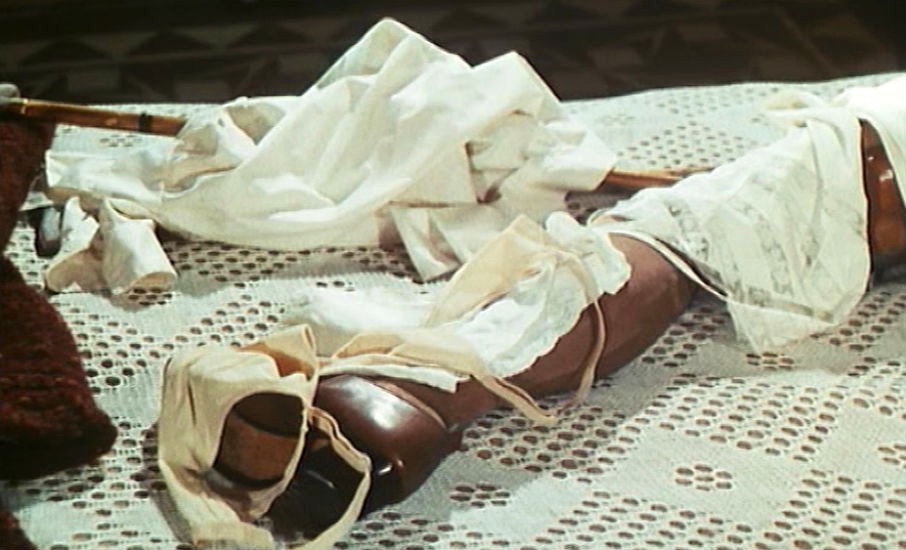
Tristana’s wooden leg strewn with her panties and bra
Horatio, however, shows only brotherly concern, and for that she despises him: ‘Don Lope would never have let me go to another man’s house’. In this remark we see a fundamental dynamic of the feminine: an assertion of mastery contending with a desire to be mastered. This is a key ingredient in the cocktail we call ‘bitch’ (an epithet actively assumed by women today—just take a look, for example, at fashion models’ Instagram feeds), and Deneuve mixes it beautifully. Indeed, the fire of her contempt is all the brighter for the ice from which it issues. In this, as an actress, she is untouchable, making of the privilege of beauty a power that subjugates the spectator.
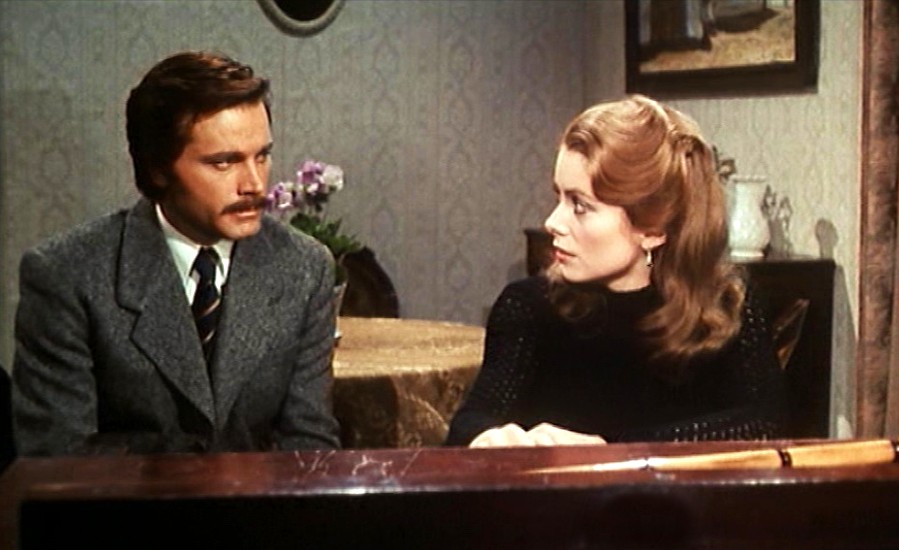
Franco Nero & Catherine Deneuve, Tristana, Luis Buñuel
Mastery and contempt are active forces while desire to be mastered and opposed are passive: Deneuve’s body/voice (see ADJANI 1 for more on this notion) is uniquely suited to incarnating the active dormant in the passive, the passive dormant in the active. For this reason, Deneuve is supreme as a screen actress, for only the film close-up can render the ‘nihilism of beauty’ (see DENEUVE 1 for an explanation of this term) and capture the subtle play of active/passive on a face. Indeed, on stage, Deneuve’s ‘magic’ would be relatively inoperative.
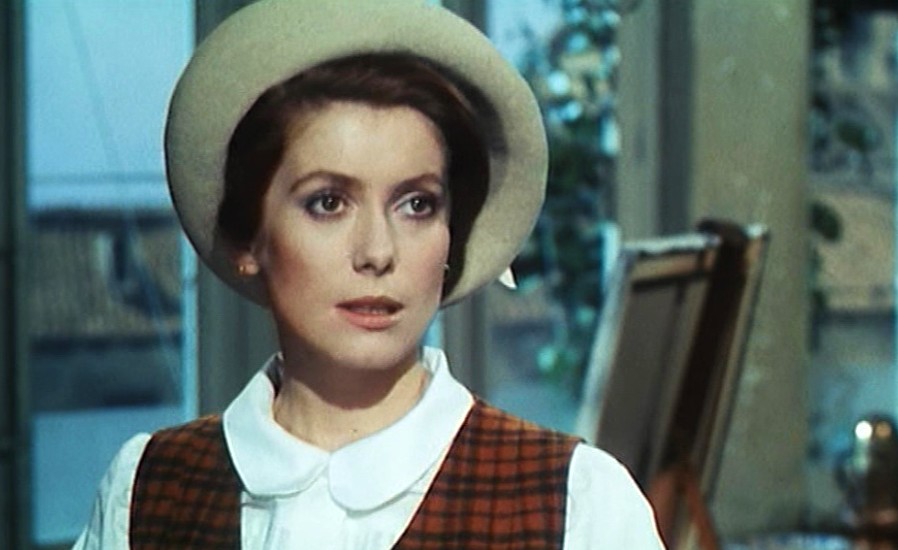
Catherine Deneuve, Tristana, Luis Buñuel
If Congreve’s line from The Mourning Bride has become proverbial, it is, of course, because scorn—and sexual scorn in particular—is the only weapon a woman can wield when effective power is in the hands of the man (or perceived to be so, given the dynamics of the feminine and femininity). Flaunting her sexuality to intensify the sting of her withholding it, then, gives a sharper edge to a woman’s revenge. If, in the first two thirds of the film, Tristana’s face was luminous, in the latter third infernal shadows of Buñuel’s black tarantula fall upon it, shadows that her make-up only makes more ominous.
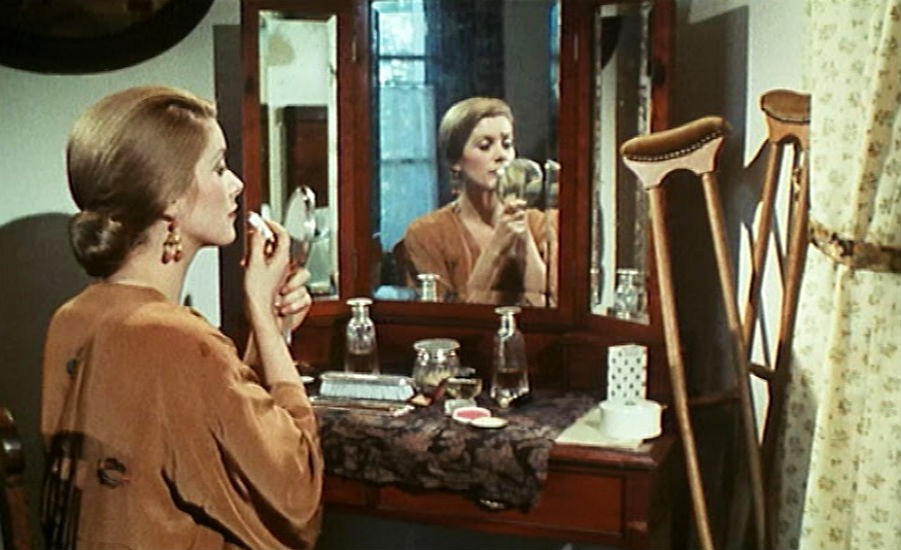
Catherine Deneuve, Tristana, Luis Buñuel
It is no surprise, then, that Tristana is one of Catherine Deneuve’s favourite roles. She has often said how appealing she found it to play the character’s evolution over time (see, for example, her interview with Pascal Bonitzer in her memoirs of her film shoots, A l’ombre de moi-même). Indeed, the movement from passive obedience to active rebellion, from wide-eyed wonder to jaded disdain, furnished the actress an opportunity to draw on a broad palette of emotional colours. Her natural economy of gesture and predilection for nuance alternated with her gift for scorn and the cutting remark.

Catherine Deneuve, Tristana, Luis Buñuel
If Deneuve, with her face alone, can launch a thousand ships, in Tristana she employs the ‘nihilism of beauty’ rather differently. Indeed, the act of incest, like a slow poison, comes to imprint violence on her face, a violence directed not only against Don Lope, but against everyone who she deems complicit with him.
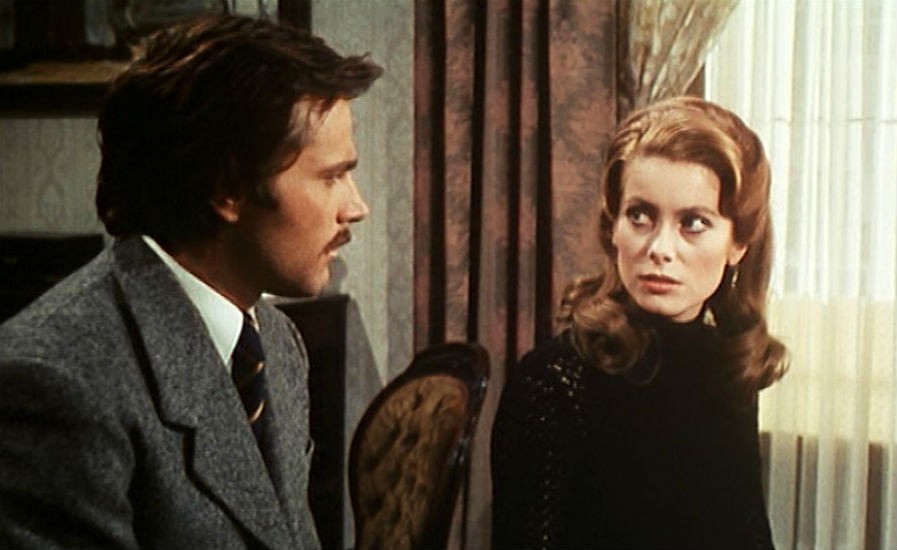
Franco Nero & Catherine Deneuve, Tristana, Luis Buñuel
Don Lope, by imposing sexual relations on Tristana, has made her a threefold orphan: already motherless and fatherless, she becomes orphaned of her substitute father. More importantly, she intuitively understands that ‘incest is a matter of narcissism before it is a question of sex’ and that ‘incest has the disastrous capacity to pile violence and the refusal of recognition on top of trauma’ (Paul-Claude Racamier, L’inceste et l’incestuel, pp. 66-67, my translation). It is this that makes her so bitter, so ‘cruel’, and willing to commit ‘murder by omission’.
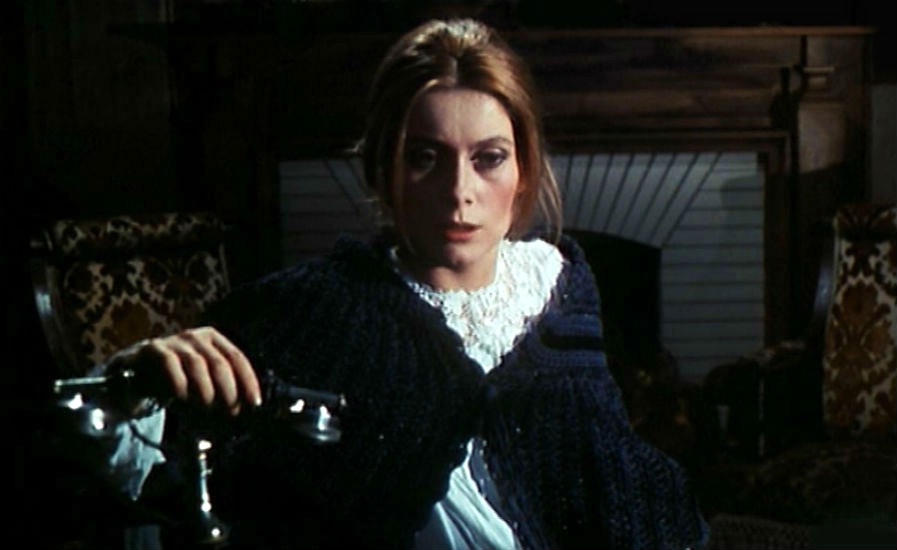
Catherine Deneuve, Tristana, Luis Buñuel
The amputation of Tristana’s leg, then, did not entirely remove the poison of incest from her blood: her anger and bitterness act as an antidote to its lingering effects, while her affirmed sexuality serves to reinforce the femininity vampirized by her substitute father. And, in an attempt to rid herself once and for all of the persecuting head in the bell—the image of incest—she hastens the death of the dying Don Lope.
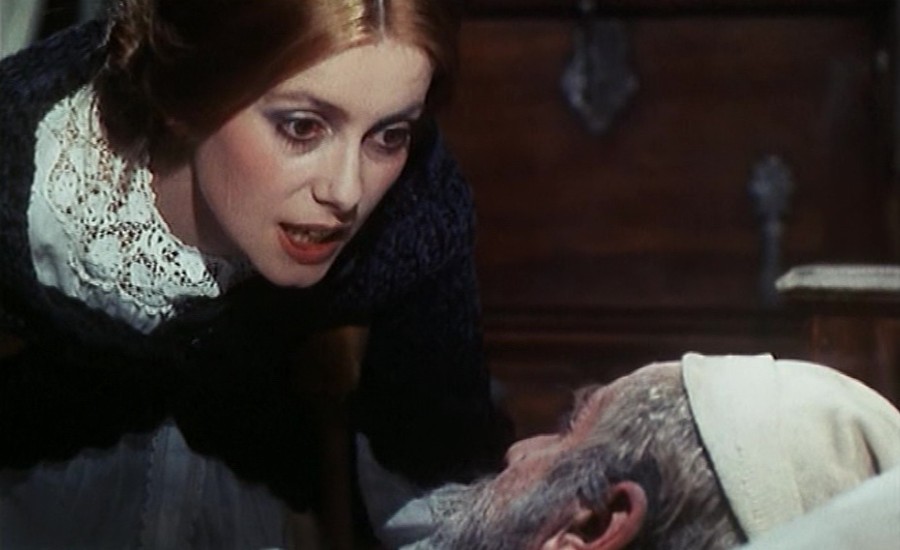
Catherine Deneuve & Fernando Rey, Tristana, Luis Buñuel
All these events, then, internal and external, Catherine Deneuve is called upon to incarnate, and to that end she makes her face a mirror of Tristana’s emotions, conveying with equal felicity the power of the repressed and the intensity of release. Her performance in the role is one of her finest; her unique attributes beautifully serve the film.
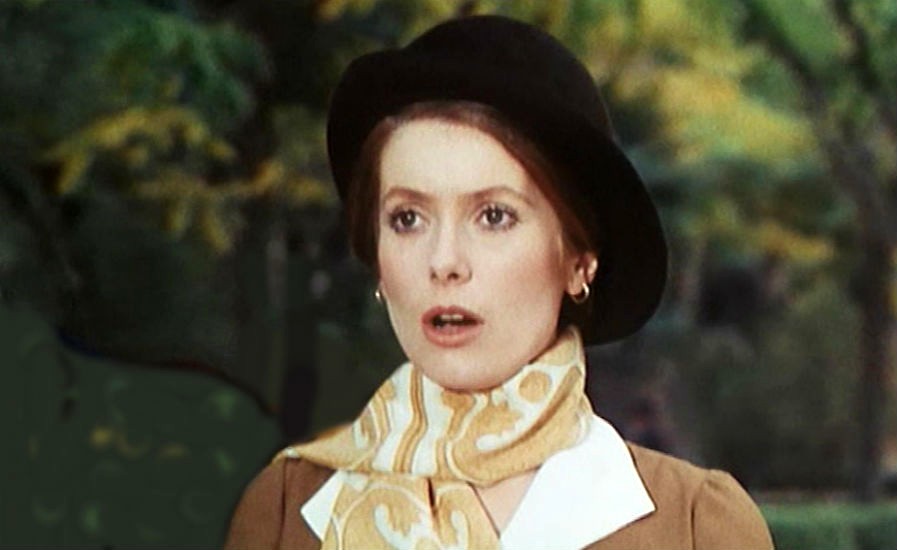
Catherine Deneuve, Tristana, Luis Buñuel
MARA, MARIETTA: A LOVE STORY IN 77 BEDROOMS
A literary novel by Richard Jonathan
FILM ACTRESSES & GLOBAL CLASSICS IN THE MARA MARIETTA CULTURE BLOG
CLICK OR TAP ON THE IMAGE TO GO TO THE CORRESPONDING PAGE
By Richard Jonathan | © Mara Marietta Culture Blog, 2020 | All rights reserved

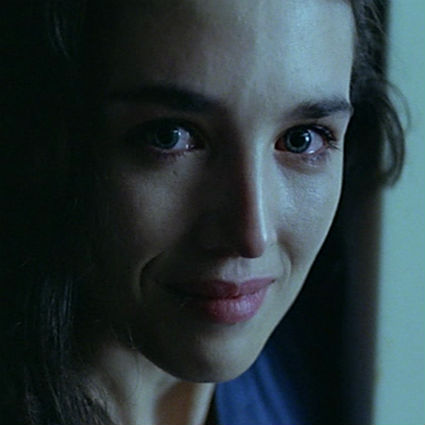
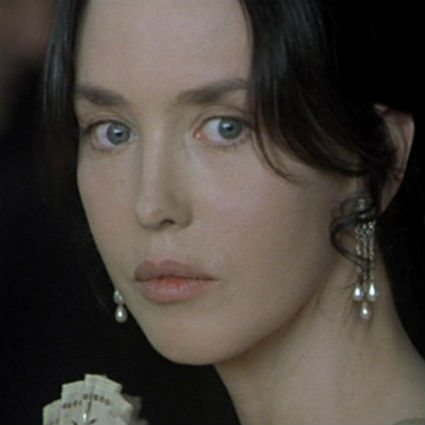
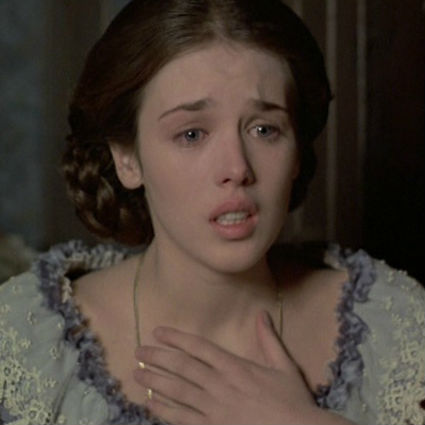
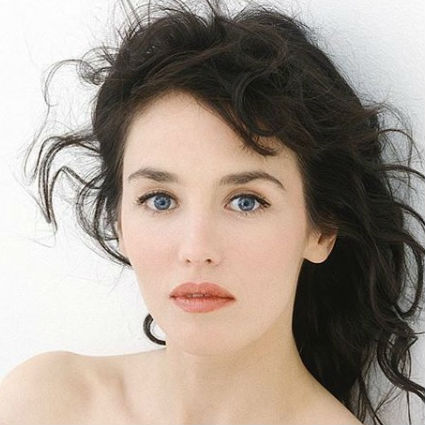
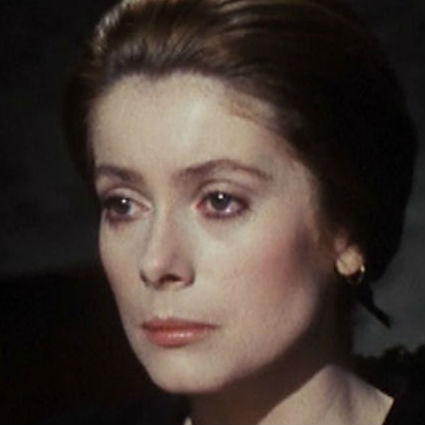
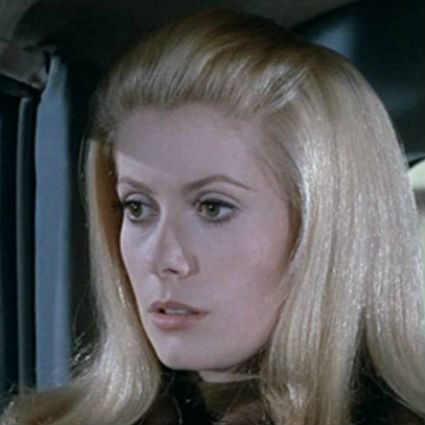
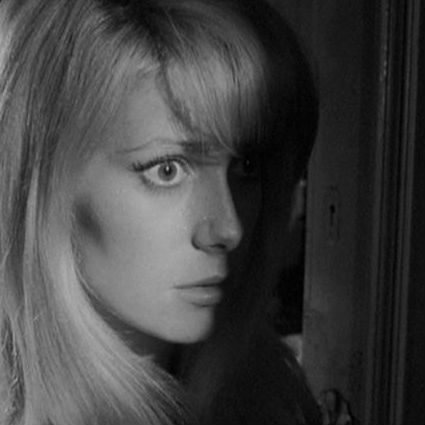
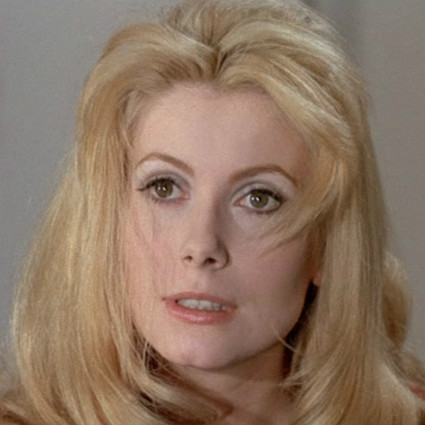
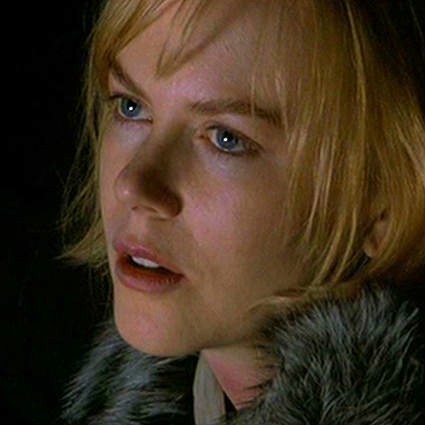
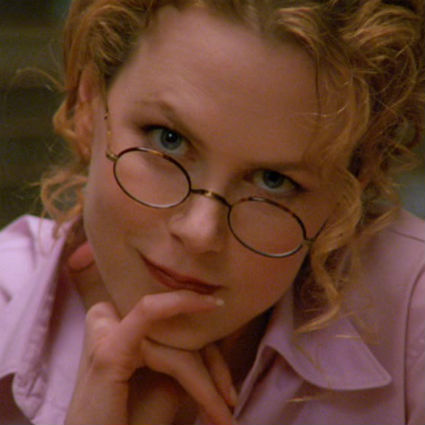
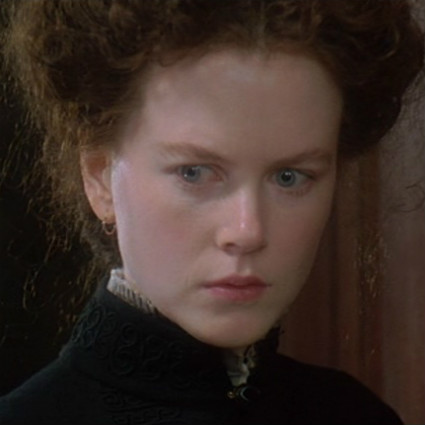
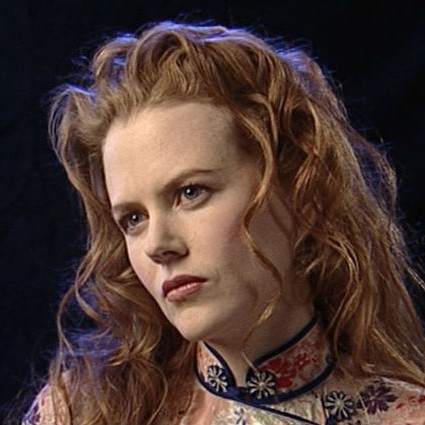
Comments